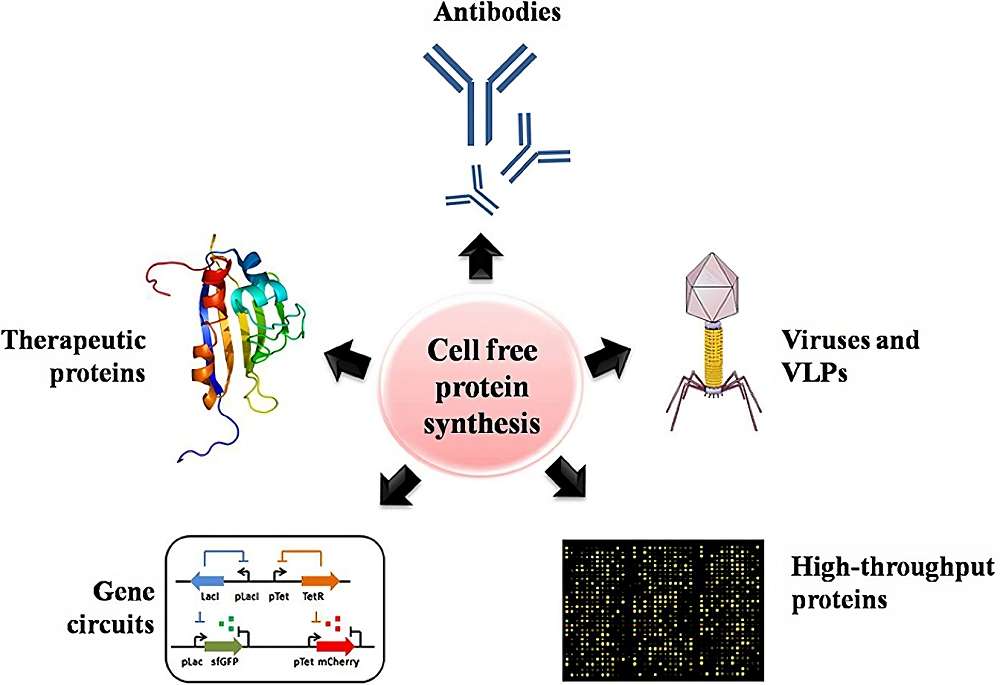Creative Biolabs provides custom Cell-Free Display System services for protein engineering, including the ribosome display, mRNA display, covalent/non-covalent DNA display and in vitro compartmentalization methods.
Taking the cellular ribosomal protein synthesis for example, a cell extract from Escherichia coli, wheat germ, or rabbit reticulocytes is prepared, and contains components such as ribosomes, translation factors, aminoacyl-tRNA synthetases, and tRNAs, which are required for production of protein. Additional components like RNA polymerase can be added into the extract for more efficient protein production. Alternatively, individually purified components of a translation apparatus can be combined together for the same purpose. This system provides a greater degree of control, though more work needs to be done to make it an established system.
Cell-Free Display systems represent alternative ways to display proteins, which have been used to develop protein engineering applications, such as directed evolution, genotype-phenotype linkage and protein design with novel functions (e.g., recognizing specific protein folding). They are gaining attention for the simplicity and a high degree of controllability. Compared with other display methods, Cell-Free Display systems are able to improve protein equilibrium constant, off-rate, stability, and folding.
A significant advantage of these systems is the off-rate selection, through which the slower off-rates can be selected to increase the binding affinity. Besides, a transformation step is not needed, neither is the maintaining of cell viability during the translation and selections. Therefore, library sizes in the range of 1012-1013 are easily achievable for increased diversity and probabilities of isolating desirable sequences. Finally, sequences recovered from the selection rounds can be diversified conveniently by cell-free display methods, using error-prone PCR, staggered extension process and DNA shuffling, instead of traditional PCR. These systems can also be used for the production of proteins containing unnatural amino acids and development of proteins exhibiting novel functions.
 Fig.1 Applications of cell-free protein synthesis (CFPS) systems for assisting high-throughput protein production.1
Fig.1 Applications of cell-free protein synthesis (CFPS) systems for assisting high-throughput protein production.1
A concern over the cell-free translation system is whether biologically active proteins can be produced. This can be addressed by adding additional proteins such as molecular chaperones, so as to ensure the correct folding. In the case of antibodies, the redox-dependent chaperone protein disulfide isomerase (PDI) can be used to handle disulfide bond formation.
We can work with you in engineering proteins by the cell free display systems, carefully evaluating each supplement and/or subsystem for the best synthesis outcome.
Reference
All listed services and products are For Research Use Only. Do Not use in any diagnostic or therapeutic applications.
| USA:
Europe: Germany: |
|
|
Call us at: USA: UK: Germany: |
|
|
Fax:
|
|
| Email: info@creative-biolabs.com |
